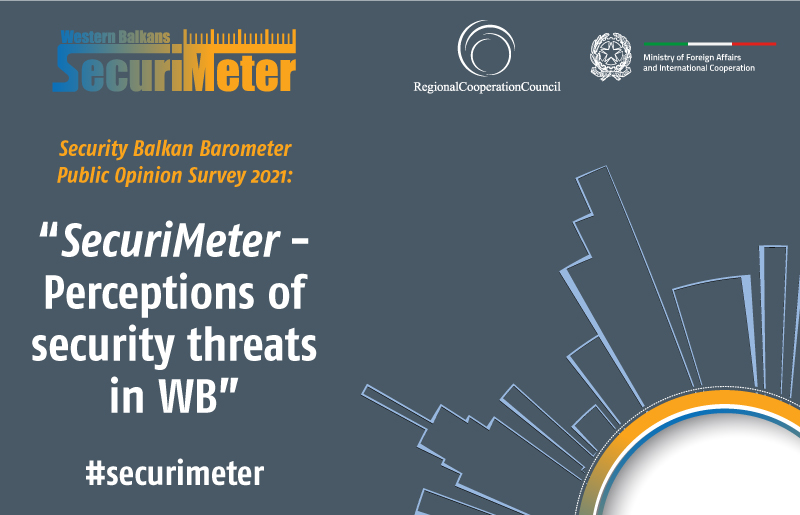- Home/
- News
Want to Deradicalize Terrorists? Treat Them Like Everyone Else.

Demonstrators gather outside a deradicalization center in Pontourny, France, the country's first Center for Prevention, Integration, and Citizenship on February 11, 2017 during a protest demanding its closure. (Guillaume Souvant/AFP/Getty Images)
Many counter-extremism efforts falter because ideological reform programs run by governments lack credibility. Appealing to the basic psychological needs of ex-radicals is more promising.
As the French prime minister in 2016, Manuel Valls presented an 80-point, $114 million plan for countering jihadists. It featured an experimental deradicalization center that Valls hoped would turn French extremists into non-threatening citizens who could rejoin society. The objective was worthwhile, but it was hamstrung by a peculiarly French focus on secular nationalist symbolism.
At the center, nine volunteers for rehabilitation worked with teachers, psychologists, and imams in a rural chateau in the Loire Valley to discuss religion and jihadi ideologies. Participants were expected to stop eating halal food. Every day, they studied French history, philosophy, and literature, wore uniforms, and sang the national anthem.
Unsurprisingly, the program ended after just five months. Local villagers protested the former extremists’ proximity to their community and several French experts and officials criticized the model for its clumsy, heavy-handed design flaws. Though this model isn’t reflective of France’s comprehensive deradicalization strategy, it suggests that when done poorly, deradicalization programs benefit no one—neither the participants, government, nor community—and can do more harm than good. Three participants in the program started calling themselves “the rigorist Salafist gang” and another was later arrested for the crime of “apology for terrorism.”
The French government made two primary mistakes. First, although the center wanted to address the root causes of radicalization and had psychologists on staff, the model put too much focus on ideology by trying to replace extremism with a secular “counter-truth.” Second, the program promoted Western nationalist identities over Islamic ones, an especially fraught move in France, given the country’s long-standing tensions around laïcité, the legal principle that promotes secularism in theory but, to many critics, seems to be more focused on limiting Muslims’ ability to observe Islam. Ultimately, these mistakes not only made deradicalization unlikely, they were also bad policy.
A more comprehensive psychology-based framework would make deradicalization programs more effective, offer a more appropriate role for the government, and protect former extremists’ legal rights.
The first step is to see ex-jihadis as individuals with unique psychological traits. Daniel Koehler, director of the German Institute on Radicalization and De-radicalization Studies, argues that deradicalization can only happen when an individual has a “cognitive opening” and an environment that supports personal reflection. In this kind of environment, a program could then initiate deradicalization by applying and engaging what psychologists and researchers term the “significance quest theory” (SQT) as one component of the deradicalization process.
The SQT postulates that all individuals are motivated by a desire to have significance in their lives—essentially, to matter. When applied to violent extremism, the theory suggests there are three elements that can translate this basic human need into motivation for violence: a need for personal significance, an ideological narrative (often political or religious) that presents violence as an acceptable method, and a social network that supports this path. Some Islamic State recruits, for example, have cited political motivation or spiritual duty. Similarly, neo-Nazi and Ku Klux Klan propaganda often promises members a fulfilling role in protecting women, children, and country.
Psychologists including David Webber, of Virginia Commonwealth University, and Arie Kruglanski, of the University of Maryland, argue that successful deradicalization efforts might specifically address an individual’s significant “deficits.” That means analyzing their needs, narrative, and network, and redirecting those desires toward more positive goals such as meaningful jobs or community roles through therapy, education, and networking. When done well, this kind of approach sees former extremists as complex, multifaceted people.
Sri Lanka is one country that has employed this model. After the country’s civil war ended in May 2009, the victorious government of President Mahinda Rajapaksa established detention centers for members of the defeated militant group, the Liberation Tigers of Tamil Eelam (LTTE). Detained former Tamil Tigers would then undergo a deradicalization program that took a six-pronged approach addressing the educational, vocational, spiritual, recreational, psychosocial, and sociocultural/familial aspects of an individual’s life when transitioning back into society.
Kruglanski, Webber, and their colleagues evaluated this program, examining 601 former Tamil Tiger members, including men and women of all ages. Ultimately, they found that program participants showed decreased levels of extremism over time thanks to lower feelings of insignificance.
As a result, participants were less reliant on Tamil Tiger separatist ideology and were less nostalgic for the group. When looking at the program’s long-term impacts, the study found that former participants were significantly less extreme than other Tamils who lived in their community but had never joined the Tigers. Those who kept social ties to the group were more extreme, suggesting the importance of a new social network.
The Sri Lankan case study, of course, has its limitations. Many participants may have demonstrated lower levels of radicalization and desire to rejoin society because the Tamil Tigers had been defeated, so participation wasn’t a viable option. The program also doesn’t include high-level extremists who planned or carried out attacks. More seriously, the fact that the program is government-run and military-managed—following a violent conflict in which the LTTE fought the Sri Lankan state—should be a red flag.
Rajapaksa was famously anti-LTTE in his platform, and human rights groups have reported abuses perpetrated by both the secessionists and the government. For example, the government detained 280,000 Tamil civilians after the war ended. France does not have the same recent history of conflict, but any model that involves a majority group government imposing values on another should be treated with some suspicion.
The Sri Lankan case study shows promising results for how programs can address the psychology of deradicalization, but the government’s involvement, as in France, was a problem. One clinical psychologist, Malkanthi Hettiarachchi, described Sri Lankan rehabilitation centers as “warm” environments that treat participants with “care and respect,” and vaguely noted that the government-run, civilian-staffed program are operated separately from the “investigating arm of the state.”
The program also involves nongovernmental organizations, corporate and private sector cooperation, and a mentoring program featuring successful Tamil actors, businesspeople, and athletes. Still, it’s easy to imagine that a strong government influence immediately following a violent conflict could make it difficult for such an environment to fully achieve the cognitive opening that Koehler emphasizes.
That’s because credibility matters. Respecting former extremists’ religious and political rights is equally important, as this helps ensure programs don’t strike participants as repressive or hypocritical. Any appearance of deradicalization turning into “re-education” could easily backfire.
Civil liberties advocates and community groups are especially wary of government deradicalization programs violating individual rights to freedom of speech or religion, or strongly promoting specific ideologies. Ritu Banerjee, the senior director of the Canada Centre for Community Engagement and Prevention of Violence, rightfully said that when government officials debate ideology with ex-radicals, it can seem like “propaganda.” In cases with Islamist extremists, anything fueling the “Islam versus the West” dichotomy undermines deradicalization and plays into jihadi messaging.
In France, it’s especially important to avoid nationalist messaging because of laïcité’s recent anti-Islamic overtones. Debates about public displays of religion have focused far more on wearing burkinis than crucifixes, signaling that Islam isn’t welcome in French society while observance of other religions is fine. Far-right politician Marine Le Pen famously said“France isn’t burkinis on the beach. France is Brigitte Bardot,” and former President Nicolas Sarkozy also called for a burkini ban against what he considered a radical Islam “provocation.”
To create successful programs and balance government involvement, governments should stick to their specialty: bureaucratic tasks like job identification to smooth the social transition and coordinating witness protection for former radicals who testified against other members. Then, community partners can take on their role as more credible—and legally appropriate—intermediaries to discuss ideology, religion, and extremism.
But maintaining this balance is easier said than done. According to Evanna Hu, co-founder and CEO of Omelas, a company that evaluates global online countermessaging, any program involving former extremists is high-risk. Politicians, by nature, are afraid of a backlash or the consequences if a graduate later commits an attack.
Some critics also argue that any government involvement will discredit intermediaries such as imams or therapists. In the French program, for example, former jihadis viewed the program’s designated imam as “unfaithful” for working with the secular government and not eating halal food and they initially refused to speak with him. However, models in countries such as Canada, Saudi Arabia, and Singapore have suggested that governments can serve as valuable intermediaries and convening forces between local religious leaders, authorities, former extremists, and their families. Government involvement, when carefully designed and implemented, could potentially lend programs credibility and structure, driving results.
Governments have also acted while maintaining political distance through issuing deradicalization grants. For example, the U.S. Department of Homeland Security’s Countering Violent Extremism grant program gave money to groups such as the education nonprofit Ka Joog, which works with the Somali community in Minnesota and implements localized anti-extremism programs. While skeptics could research these groups’ funding—grant awards are publicly announced on government websites and sometimes receive local media coverage—the tone is much different than if the U.S. government itself was directly running and operating the program.
In 2017, however, the Trump administration shifted the program’s focus to groups partnering with law enforcement and working against Islamist extremism. Life After Hate, the only group funded by DHS to work against far-right extremism, also lost their funding, potentially because one of the group’s founders was critical of President Donald Trump on Twitter. After that, some Muslim-focused organizations, including Ka Joog, returned their grants, citing Trump’s attitudes toward Muslims and immigrants. In Ka Joog’s case, this meant giving up almost $500,000.
The perception of government Islamophobia directly thwarts deradicalization efforts.
It alienates Muslim communities, ignores far-right threats, and sabotages community intermediaries who could otherwise be well-received messengers. This has a disastrous effect on deradicalization programs because it discredits government assistance and the intermediaries who accept it, before programs even begin.
Addressing domestic extremists, returning fighters, and increasing citizen anxiety is becoming a huge challenge for Western governments—one they’re not sure how to address. Psychological models are not a cure-all and should only be one piece of the larger deradicalization puzzle.
While it is tempting to categorize terrorists and extremists as irredeemable, it’s important to remember that they generally respond to the same incentives as everyone else. Incorporating the significance quest theory model as one part of the deradicalization process may remind policymakers that extremists are, in fact, human.
Authors: Elena Souris is a research and program assistant in the political reform program at New America. Twitter: @ElenaSouris
Spandana Singh is a policy program associate at New America’s Open Technology Institute.
Source: Link


 Development of specialized PCVE web site is funded by EU FUNDS CN 2017-386/831 - "IPA II 2016 Regional Action on P/CVE in the Western Balkans"
Development of specialized PCVE web site is funded by EU FUNDS CN 2017-386/831 - "IPA II 2016 Regional Action on P/CVE in the Western Balkans"